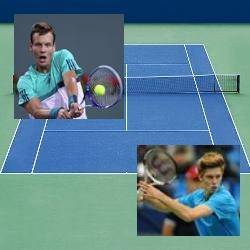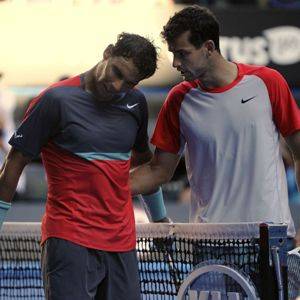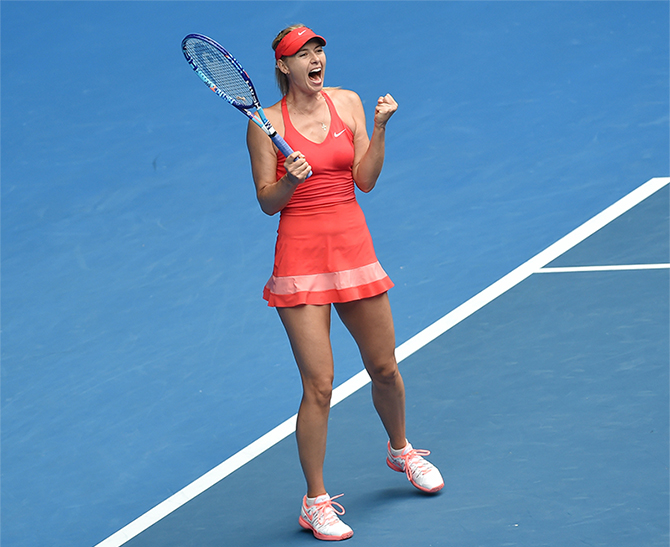
Доминик Ватрен — французский политик, сенатор Франции, член Коммунистической партии.
Родился 14 июня 1953 г. На выборах сенаторов 2011 года возглавил список коммунистов и был избран в Сенат, получив 11,36 % голосов выборщиков.
с 03.2001 — вице-мэр города Рувруа18.03.2001 — 19.03.2008 — член Генерального совета департамента Па-де-Кале (от кантона Рувруа)c 19.03.2008 — вице-президент Генерального совета департамента Па-де-Калес 01.10.2011 — сенатор Франции от департамента Па-де-Кале.
Профиль на сайте Сената Франции
Категории:Wikimedia Foundation. 2010.
Рувруа (кантон) — У этого термина существуют и другие значения, см. Рувруа. Рувруа фр. Rouvroy кантон Франции (АЕ 3 го уровня) … Википедия
Генеральный совет департамента Па-де-Кале — состоит из 77 советников, избираемых по одному от каждого кантона. Советники избираются на 7 летний срок, выборы в совет проводятся два раза за 7 лет и каждый раз переизбирается приблизительно половина состава совета. Последние кантональные… … Википедия
Список французских командиров наполеоновских и революционных войн — Эта категория часть проекта, посвящённого Наполеоновским и Революционным войнам Франции. Если Вы хотите помочь проекту, приглашаем Вас посетить его страницу: Проект:Наполеоновские войны. Ниже предс … Википедия
Сенаторы от департамента Па-де-Кале — В соответствии с законодательством Франции избрание сенаторов осуществляется коллегией выборщиков, в которую входят депутаты Национального собрания, члены регионального и генерального советов, а также делегаты от муниципальных советов. Количество … Википедия
Оливье де Фюнес — Olivier de Funès актёр Дата рождения: 11 августа 1949 Место рождения: Париж, Франция Оливье Пьер де Фюнес де Галарза (фр. Olivier Pierre de Funès de Galarza ; родилс … Википедия
Де Фюнес, Оливье — В Википедии есть статьи о других людях с такой фамилией, см. Фюнес. Оливье де Фюнес Olivier de Funès Имя при рождении: Olivier Pierre de Funès de Galarza Дата рождения: 11 августа 1949( … Википедия
Оливье Фюнес — Оливье де Фюнес Olivier de Funès актёр Дата рождения: 11 августа 1949 Место рождения: Париж, Франция Оливье Пьер де Фюнес де Галарза (фр. Olivier Pierre de Funès de Galarza ; родилс … Википедия
Ольвье Фюнес — Оливье де Фюнес Olivier de Funès актёр Дата рождения: 11 августа 1949 Место рождения: Париж, Франция Оливье Пьер де Фюнес де Галарза (фр. Olivier Pierre de Funès de Galarza ; родилс … Википедия
Ольвье де Фюнес — Оливье де Фюнес Olivier de Funès актёр Дата рождения: 11 августа 1949 Место рождения: Париж, Франция Оливье Пьер де Фюнес де Галарза (фр. Olivier Pierre de Funès de Galarza ; родилс … Википедия
Фюнес, Оливье де — Оливье де Фюнес Olivier de Funès актёр Дата рождения: 11 августа 1949 Место рождения: Париж, Франция Оливье Пьер де Фюнес де Галарза (фр. Olivier Pierre de Funès de Galarza ; родилс … Википедия
dic.academic.ru
Материал из Википедии — свободной энциклопедии
Доминик Ватрен — французский политик, сенатор Франции, член Коммунистической партии.
Родился 14 июня 1953 г. На выборах сенаторов 2011 года возглавил список коммунистов и был избран в Сенат, получив 11,36 % голосов выборщиков.
с 03.2001 — вице-мэр города Рувруа 18.03.2001 — 19.03.2008 — член Генерального совета департамента Па-де-Кале (от кантона Рувруа) c 19.03.2008 — вице-президент Генерального совета департамента Па-де-Кале с 01.10.2011 — сенатор Франции от департамента Па-де-Кале.
[www.senat.fr/senateur/watrin_dominique11063m.html Профиль на сайте Сената Франции]
1. Па-де-Кале (департамент) – Pas-de-Calais is a department in northern France. Its name is used in French to refer to the Strait of Dover, which it borders. Inhabited since prehistoric times, the Pas-de-Calais region was populated in turn by the Celtic Belgae, the Romans, the Germanic Franks and this linguistic border is still evident today in the toponyms and patronyms of the region. Beginning in the century, the linguistic border began a steady move to north and the east. Pas-de-Calais is one of the original 83 departments created during the French Revolution on 4 March 1790 and it was created from parts of the former provinces of Calaisis, formerly English, Boulonnais, Ponthieu and Artois, this last formerly part of the Spanish Netherlands. Some of the costliest battles of World War I were fought in the region, the Canadian National Vimy Memorial, eight kilometres from Arras, commemorates the Battle of Vimy Ridge and is Canadas most important memorial in Europe to its fallen soldiers. Pas-de-Calais is in the current region of Hauts-de-France and is surrounded by the departments of Nord and Somme, the English Channel, and it shares a nominal border with the English county of Kent halfway through the Channel Tunnel. Its principal towns are, on the coast, Calais, Boulogne-sur-Mer and Étaples, and in Artois, Lens, Liévin, Arras, however, since World War II, the economy has become more diversified. The inhabitants of the department are called Pas-de-Calaisiens, Pas-de-Calais is one of the most densely populated departments of France, and yet it has no large cities. Calais has only about 80,000 inhabitants, followed closely by Arras, Boulogne-sur-Mer, Lens, the center and south of the department are more rural, but still quite heavily populated, with many villages and small towns. Although the department saw some of the heaviest fighting of World War I, however, many of the mining towns have seen dramatic decreases in population, some up to half of their population. There are currently two universities in the department
2. Французская коммунистическая партия – The French Communist Party is a communist party in France. Although its electoral support has declined in recent decades, the PCF retains an influence in French politics. In 2012, the PCF claimed 138,000 members including 70,000 who have paid their membership fees and this would make it the third largest party in France in terms of membership after the Republicans and the Socialist Party. It was also once the largest French left-wing party in a number of elections, from 1945 to 1960. The PCF has lost further ground to the Socialists since that time, since 2009 the PCF has been a leading member of the Left Front, alongside Jean-Luc Mélenchons Left Party. The PCF is a member of the Party of the European Left, the new SFIC defined itself as revolutionary and democratic centralist. The 1920s saw a number of splits within the party over relations with other left-wing parties, the party entered the French parliament, but also promoted strike action and opposed colonialism. Pierre Sémard, leader from 1924 to 1928, sought party unity and alliances with other parties, with the rise of Fascism after 1934 the PCF supported the Popular Front, which came to power under Léon Blum in 1936. The party supported the Spanish Republicans, and opposed the 1938 Munich agreement with Hitler, PCFs Members of Parliament vote declaration of war against Germany in 1939. But the party was banned after German–Soviet Non-aggression Pact by the government of Édouard Daladier, the leadership, threatened with execution, fled abroad. After the German invasion of 1940 the party began to organise opposition to the occupation, at the same time the PCF began to work with de Gaulles Free France government in exile, and later took part in the National Council of the Resistance. By the time the German occupation ended in 1944, the party had become a force in many parts of France. It was among the parties in elections in 1945 and 1946, and entered into the governing Tripartite alliance. However, amid concerns within France and abroad over the extent of communist influence, under pressure from Moscow, the PCF thereafter distanced itself from other parties and focussed on agitation within its trade union base. For the rest of the Fourth Republic period the PCF, led by Thorez and Jacques Duclos, remained isolated, still taking a Stalinist line. Although the PCF opposed de Gaulles formation of the Fifth Republic in 1958, the years saw a rapprochement with other left-wing forces. With Waldeck Rochet as its new secretary-general, the party supported François Mitterrands unsuccessful presidential bid in 1965, during the student riots and strikes of May 1968, the party supported the strikes while denouncing the revolutionary student movements. Under the Common Programme, however, the PCF steadily lost ground to the PS, initially allotted a minor share in Mitterrands government, the PCF resigned in 1984 as the government turned towards fiscal orthodoxy
wikivisually.com
Фото из фильма «Татуированный» («Le tatoué», 1968)режиссёра Дени де Ла Пательера (Denys de La Patellière).
Луи де Фюнес в молодости.
Кадр из фильма «Фантомас» («Fantômas», 1964)режиссёра Андре Юнебеля (André Hunebelle). Луи де Фюнес с Жаном Марэ (Jean Marais).
Кадр из фильма «Жандарм женится» («Le gendarme se marie», 1968)режиссёра Жана Жиро (Jean Girault). Луи де Фюнес с Клод Жансак (Claude Gensac).
Луи де Фюнес с актрисой Машей Беранже («Macha Béranger»).
Луи де Фюнес с женой Жанной, сыном Оливье и Доминик Ватрен (Dominique Watrin).
Фамильный замок Мопасанов Клермон.
Луи де Фюнес в своём саду.
Фото из фильма «Суп с капустой» («La Soupe aux choux», 1981)режиссёра Жана Жиро.
gaumont.ru










